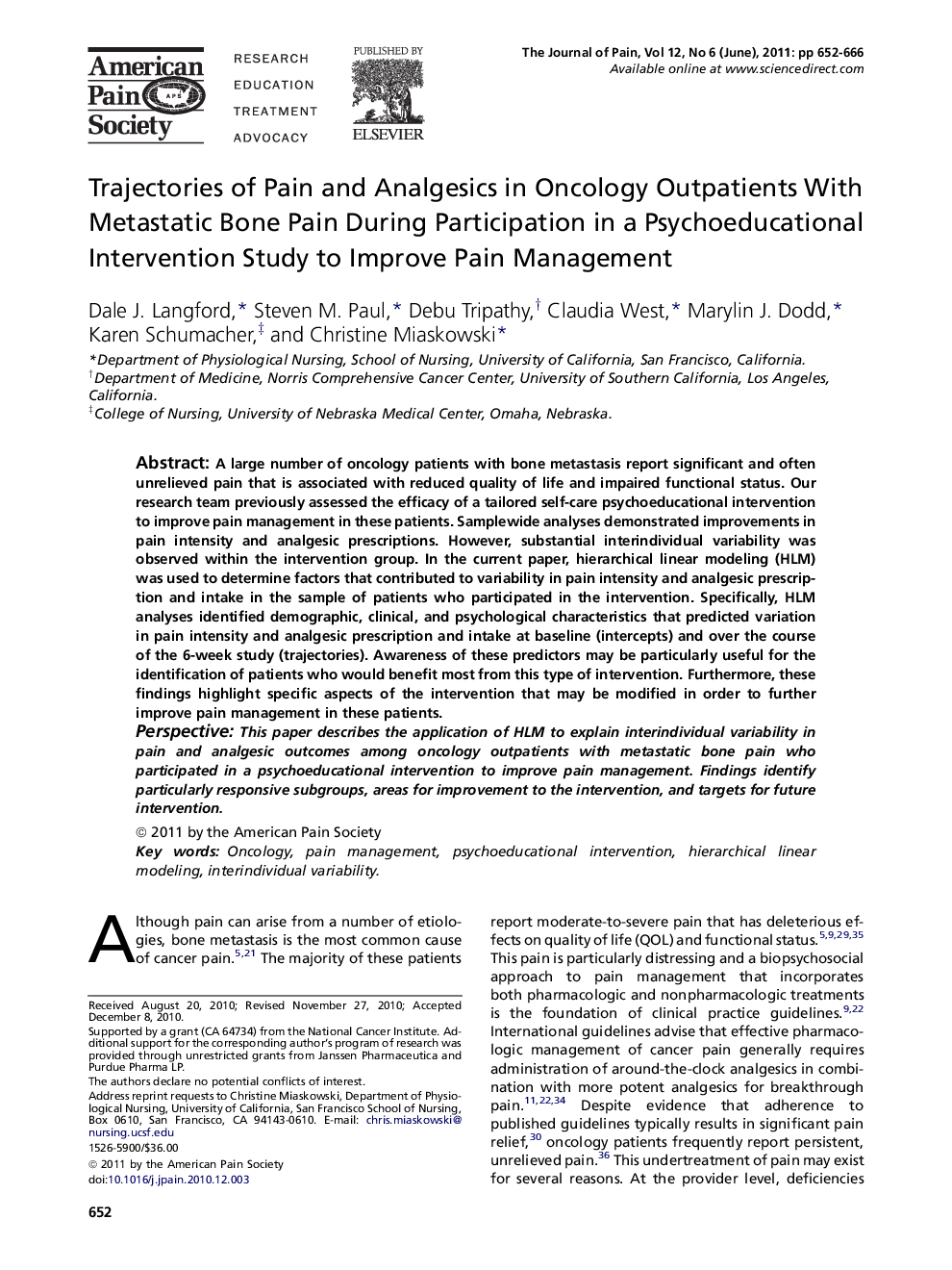| Article ID | Journal | Published Year | Pages | File Type |
|---|---|---|---|---|
| 2723222 | The Journal of Pain | 2011 | 15 Pages |
A large number of oncology patients with bone metastasis report significant and often unrelieved pain that is associated with reduced quality of life and impaired functional status. Our research team previously assessed the efficacy of a tailored self-care psychoeducational intervention to improve pain management in these patients. Samplewide analyses demonstrated improvements in pain intensity and analgesic prescriptions. However, substantial interindividual variability was observed within the intervention group. In the current paper, hierarchical linear modeling (HLM) was used to determine factors that contributed to variability in pain intensity and analgesic prescription and intake in the sample of patients who participated in the intervention. Specifically, HLM analyses identified demographic, clinical, and psychological characteristics that predicted variation in pain intensity and analgesic prescription and intake at baseline (intercepts) and over the course of the 6-week study (trajectories). Awareness of these predictors may be particularly useful for the identification of patients who would benefit most from this type of intervention. Furthermore, these findings highlight specific aspects of the intervention that may be modified in order to further improve pain management in these patients.PerspectiveThis paper describes the application of HLM to explain interindividual variability in pain and analgesic outcomes among oncology outpatients with metastatic bone pain who participated in a psychoeducational intervention to improve pain management. Findings identify particularly responsive subgroups, areas for improvement to the intervention, and targets for future intervention.
